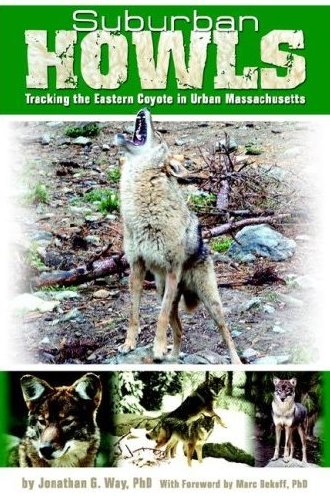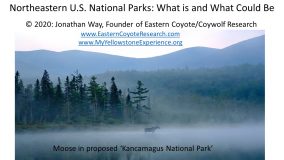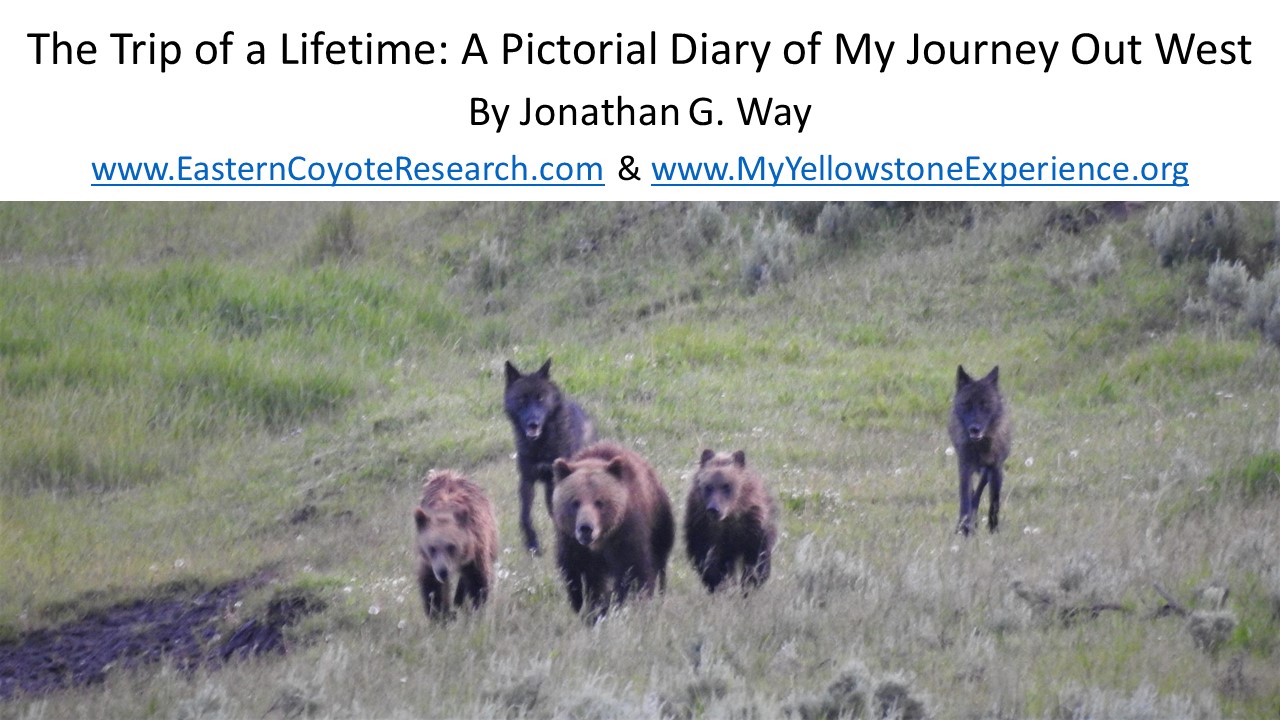I have a love affair with Yellowstone. It is an amazing place with tremendous scenery, awe inspiring geologic features, and abundant wildlife, along with great people happy to be in the world’s first national park. I have been to the park 26 times up through mid-2022, for a total of 234 days in the park. My Yellowstone book series consists of the following books: 1) My Yellowstone Experience (2013), 2) The Trip of a Lifetime (2020), 3) Christmas in Yellowstone (2021), 4) Mud, I mean April, in Yellowstone (2021), 5) Yellowstone Wildlife during Summer (2021), 6) A Yellowstone Summer with the Junction Butte Wolf Pack (2022); 7) Yellowstone in Winter; 8) A Beary Special April in Yellowstone; and 9) Late Summer in Yellowstone. Readers may also be interested in the following related book, Northeastern U.S. National Parks: What is and What Could Be (2020), which pleas for creating more national parks in the Northeast U.S.
I can’t help but stress the importance of having national parks. That is a major theme centered around all of these books. Simply put, there is no possible way that I would have seen all the wildlife that I did during those trips without having large areas protected from human interference, especially human hunting. The National Park (NP) Service’s mission of preserving ‘unimpaired the natural and cultural resources and values of the national park system for the enjoyment, education, and inspiration of this and future generations’ is a model that the rest of the world has replicated. It has been extremely effective in protecting core wildlife populations and ecosystems, as well as being an important boost to local economies as people vacation in these areas. I strongly believe that NPs are “America’s Best Idea”, as Ken Burns eloquently noted. Creating more parks in the urbanized Northeast is important, especially since wildlife watching is such of an important economic contributor to the country, and animals need full protection to be as visible as they are in places such as Yellowstone.
The paragraphs below describe the books, in chronological order, in more detail. All of them are Open Access and free to download except for My Yellowstone Experience, which is a print book. Thanks for your interest!
1. My Yellowstone Experience:
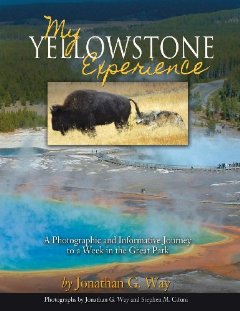
The book is 152 pages with over 300 pictures of Yellowstone’s amazing hydrothermal features, scenery, and wildlife. It is color throughout and printed on high quality, shiny, glossy paper like most color picture books are. Book is only $19.99 + $4 Shipping/Handling (for U.S. residents; $4 total, no matter how many books you order). This book is also available as a Print On Demand (POD) picture book through online sources like Amazon and Barnes & Noble. Note: The POD version is lower quality than the book available on my website. Please visit my website related to this book, and/or purchase My Yellowstone Experience by clicking here:
My Yellowstone Experience e-book. To receive the book as a color PDF and the book in .epub format please donate $10 or more to me and state in the optional message that you’d like these formats sent to you for this book (donate tab can be found here on my homepage). Here is my email if you donated and did not enter a message but would like to: easterncoyoteresearch@yahoo.com.
—–
2. Northeastern U.S. National Parks: What is and What Could Be
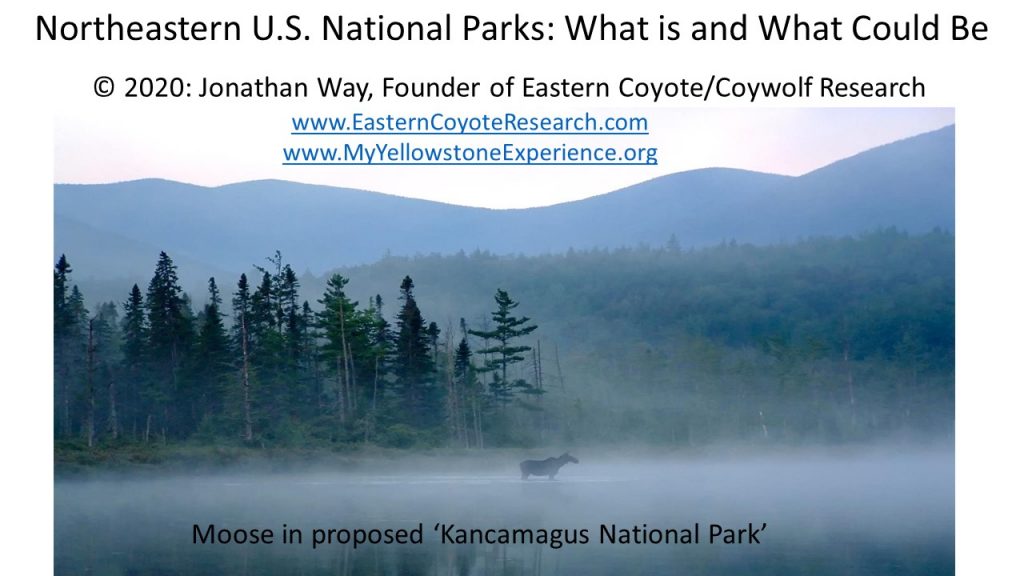
This book (and related talk) makes the case to expand the National Park (NP) System in the Northeast, beyond just having Acadia National Park as its only large “natural” park, by adding 3 units: Cape Cod NP, Kancamagus NP in NH, and Maine Woods NP and Preserve. These 3 units are already existing federal land and could immediately be turned into true national parks by an Act of Congress. Giving National Park status to these areas would provide an important, higher level of protection to better safeguard these areas especially during politically volatile times. This talk will make a plea to politicians that this is “America’s Best Idea” and is worth accomplishing here in the urbanized Northeast. The book is >310 pages and includes 600 pictures. Please click here to visit a full page dedicated to this book.
Citation: Way, J.G. 2020 (Revised, 2021). Northeastern U.S. National Parks: What Is and What Could Be. Eastern Coyote/Coywolf Research, Barnstable, Massachusetts. 312 pages. Open Access E-book. URL: http://www.easterncoyoteresearch.com/northeasternusnationalparks/.
To receive a free copy of the book as a color PDF, download your free book here. However, to support my work please consider donating $10 or more for this privilege which will allow me to continue making Open Access documents (donate tab can be found here on my homepage).
Dec. 7, 2020: I created a 4 lesson curriculum unit on this book. It comes with a worksheet and a key for all 4 lessons. It is fully adapted for remote learning. A test/assessment can easily be from these questions. Get the book and curriculum unit for $19.99:
—–
3. The Trip of a Lifetime: A Pictorial Diary of My Journey Out West
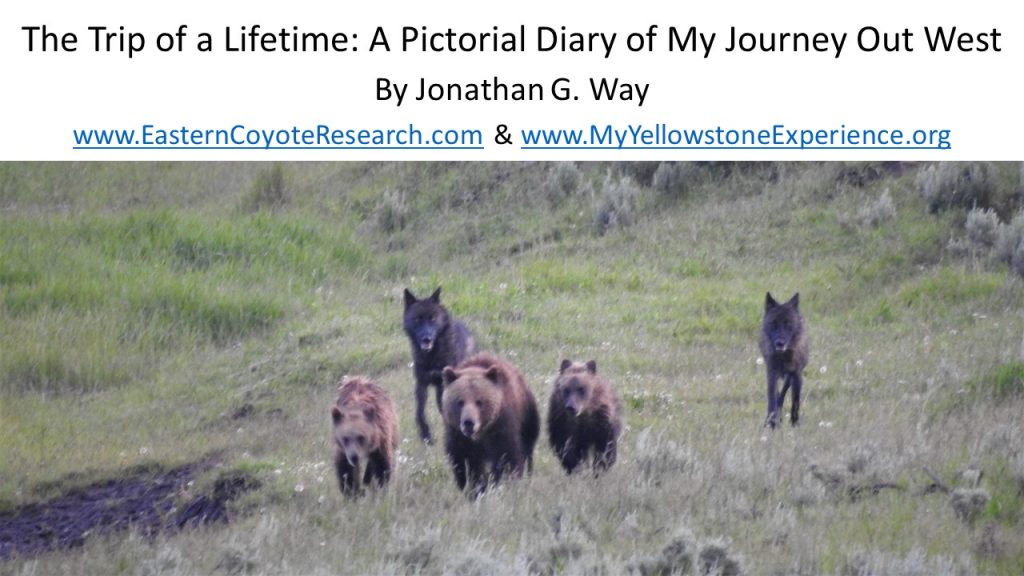
This 561 page book is the result of a dream 3.5 week trip I took out west during summer 2019. I visited dozens of parks, protected areas, and national forests/grasslands to produce this pictorial journey, including 995 images, which describes my adventure in a unique, very visual way. It is intended to be an easy, relatively quick read given the number of pictures of our great country and some of its best natural features. This book is unique in the annals of adventure books and western national park reads in that I provide a journalistic flair to the text and offer insights into my observations, yet provide abundant, maybe even overwhelming, visual documentation. The importance of our national parks is clearly evident to make this book possible, especially the pictures. The case is made to expand the existing national park system to include more large natural areas throughout the country that ‘preserve resources unimpaired for future generations’ so additional people can have similar experiences to the ones that I had.
Citation: Way, J.G. 2020. E-book (Revised, 2021). The Trip of a Lifetime: A Pictorial Diary of My Journey Out West. Eastern Coyote/Coywolf Research, Barnstable, MA. 561 pages. Open Access URL: http://www.easterncoyoteresearch.com/thetripofalifetime/.
—–
4. Christmas in Yellowstone: A Dream Come True
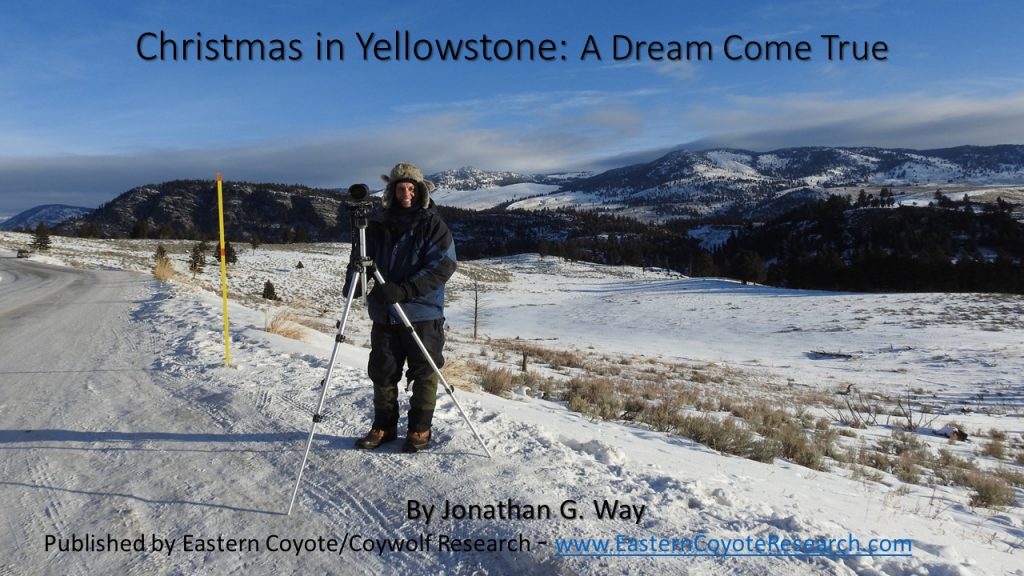
Christmas in Yellowstone was a great nature film, a bucket-list dream of mine to one day go out there during the holidays, and then in 2020 it became a reality. On the cover picture, I spent Christmas eve in 0° Fahrenheit weather for most of the day while looking for wildlife. I was wearing four layers in that picture and did pretty well, not retreating to my car, and braving mother nature’s beautiful elements. “Merry Christmas to all from Yellowstone!” was what I noted on a Facebook post during the holidays. In this e-book, I share with you, the reader, my experience out in the world’s first national park during the 2020 holiday season in a photographic journey intended to awe the reader.
Citation: Way, J.G. 2021. Christmas in Yellowstone: A Dream Come True. Eastern Coyote/Coywolf Research, Barnstable, MA. 208 pages. E-book. Open Access URL: http://www.easterncoyoteresearch.com/ChristmasInYellowstone/.
—–
5. Mud, I mean April, in Yellowstone: Nature’s Transition from Winter to Spring
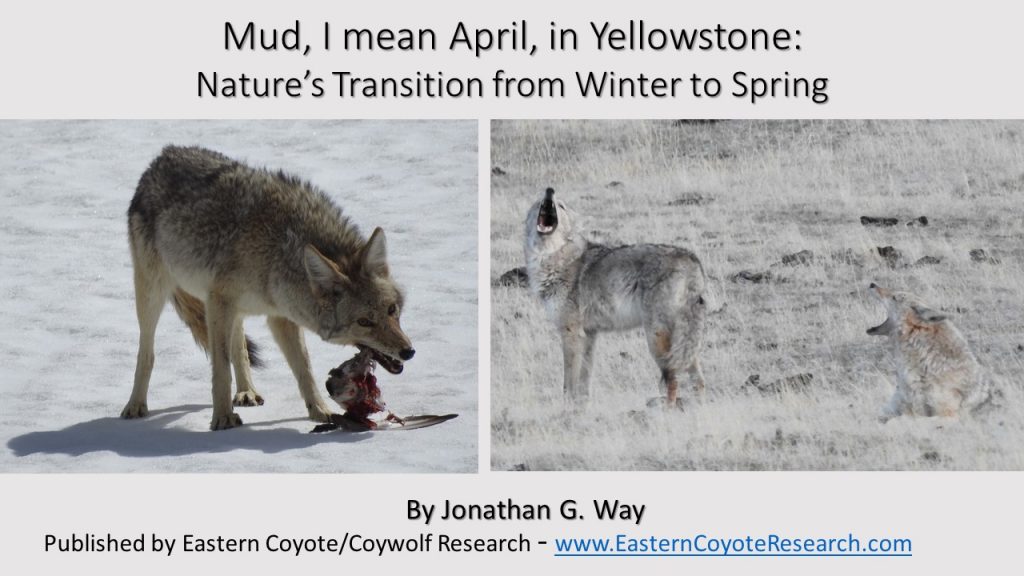
Yellowstone is an absolutely amazing place and I hope this collection of pictures from a 9 day trip in early spring clearly articulates that. Nature is in transition from winter to spring during most of April (and into May) so I love the diversity of pictures found in this book from springtime looking images to mornings with fresh, winter-like snow. April is the mud season where much of the landscape is either melting or melted snow. This produces hazardous conditions with lots of slippery mud or even more slick ice which is especially common on trails that are already well worn into the ground; hence the odd but hopefully comical title of this book. You will see many pictures related to this subject in addition to the abundant wildlife and gorgeous scenery.
Citation: Way, J.G. 2021. Mud, I mean April, in Yellowstone: Nature’s Transition from Winter to Spring. Eastern Coyote/Coywolf Research, Barnstable, Massachusetts. 330 pages. E-book. Open Access URL: http://www.easterncoyoteresearch.com/MudIMeanAprilInYellowstone.
—–
6. Yellowstone Wildlife during Summer
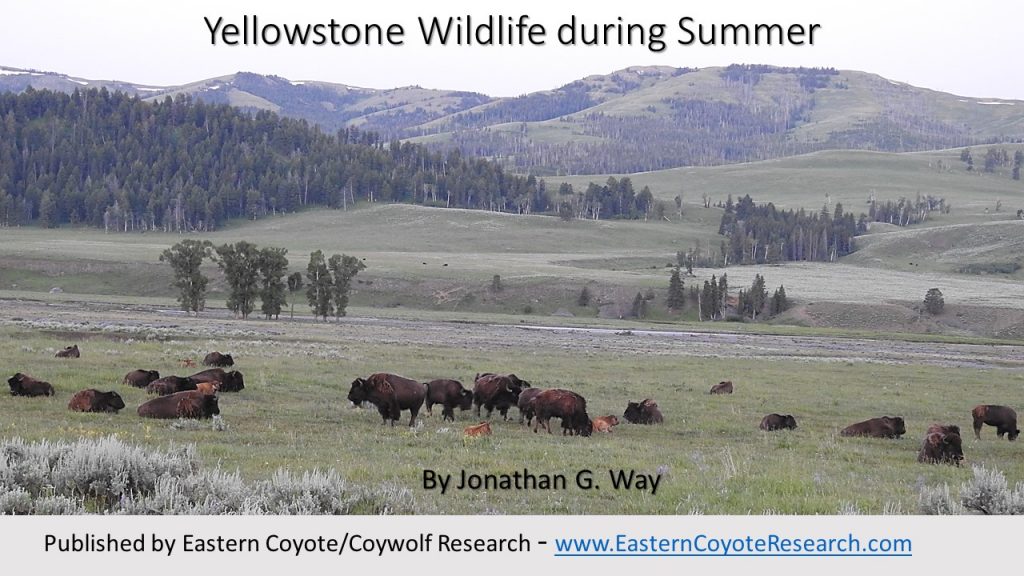
I have a love affair with Yellowstone. It is an amazing place with tremendous scenery, awe inspiring geologic features, and abundant wildlife, along with great people happy to be in the world’s first national park. Up until this book, I had written four books related to my experiences: My Yellowstone Experience (2013), The Trip of a Lifetime (2020), Christmas in Yellowstone (2021), and Mud, I mean April, in Yellowstone (2021) . However, because the majority of people travel to national parks in the summertime, I thought a tome about wildlife in Yellowstone during the busy season would be a unique contribution to the literature, and would be personally meaningful to the many tourists who visit the park during the busy season to seek out the park’s famous fauna.
This major project came about, in part, because many of my Facebook friends (including family members) continue to be enchanted with the pictures that I post when I travel. For this pictorial montage, I combed through about 7,000 images from my 7 most recent summertime trips and select files from other trips. I chose my best 661 pictures during the summertime for this book.
Citation: Way, J.G. 2021. Yellowstone Wildlife during Summer. Eastern Coyote/Coywolf Research, Barnstable, Massachusetts. 467 pages. E-book. Open Access URL: http://www.easterncoyoteresearch.com/YellowstoneWildlifeDuringSummer.
—–
7. A Yellowstone Summer with the Junction Butte Wolf Pack. This e-book details, in 510 pictures, the life and times of a famous wolf pack followed during the summer by adoring fans.
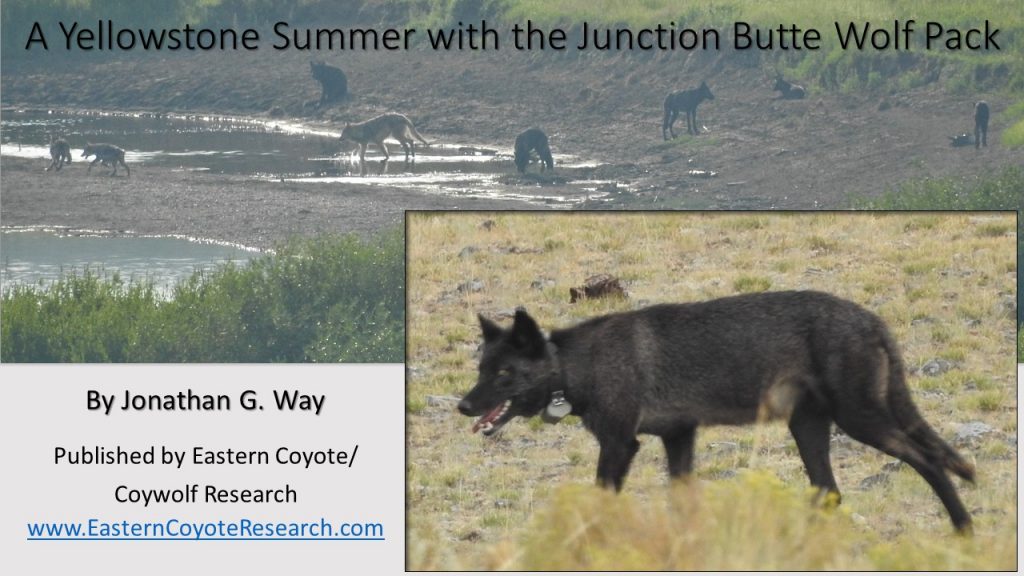
Summer is the time of year for tourists, heat, and bison jams. For locals and visitors alike, it is an exhausting period because these three ingredients create a considerable amount of traffic and uncomfortable, irritable people on hot, relentless sunny days. However, nature and wildlife thrive in Yellowstone despite the mass of humanity in the world’s first national park during the busy summer months. My two week trip from July 21 to August 3, 2021 was no exception, and was highlighted by seeing the Junction Butte Wolf Pack on all 14 days. Yellowstone is quite literally the only place in the world where this is possible.
The ‘Junctions’ regularly hunted in Lamar Valley and Little America. These two places are open, grassland-dominated valleys where wildlife, especially bison, abounds. Wolves are often seen in these areas. This pack was one of the largest on record, numbering 34-35 individuals during my Christmas in Yellowstone trip. During my summer 2021 trip, they were down to around 20 adults and yearlings, plus the new pups of the year. Wolves mostly travel in small groups during the summer so getting whole pack counts can be difficult. In this book, I provide detailed notes and pictures on what I saw during each observation session with the wolves. I also provide images of other wildlife observed during my two weeks in Yellowstone. Lastly, I conclude the book by documenting the tragedy that the Junction pack experienced in winter 2021-22.
For more, including to download it, please visit the book’s link:
Way, J.G. 2022. A Yellowstone Summer with the Junction Butte Wolf Pack. Eastern Coyote/Coywolf Research, Barnstable, Massachusetts. 481 pages. E-book. Open Access URL: http://www.easterncoyoteresearch.com/YellowstoneSummerWithJunctionButteWolfPack.
—–
8. Yellowstone In Winter: The Recovering Wolves of the Northern Range. This e-book details, in over 450 pictures, the wildlife of Yellowstone, particular wolves and their prey, during the depths of winter.
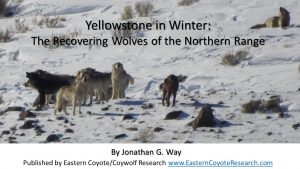
Winter is the time of year in Yellowstone for bone-numbing cold temperatures and peace and solitude in the world’s first national park. It is also a battle of survival for many of the creatures who call the park their home. Due to the relative lack of traffic and visibility of wildlife against a white backdrop, winter is an excellent time to observe wildlife. My weeklong trip from February 23 to March 1, 2022 was no exception.
I was particularly interested in observing the Junction Butte wolves since I have observed them so often over the past several years, especially during the previous summer (2021). I was greatly concerned about them, and the other wolves, due to what the states of Montana and Idaho have done to aggressively reduce their numbers for no legitimate reason. Livestock losses to wolves are minimal in the region and elk and deer are over “objectives” set by the states. In addition, I also was psyched to simply be in the park during mid-winter and observe how other more visible animals, namely bison and elk, behaved.
For more, including to download it, please visit the book’s link:
Way, J.G. 2022. Yellowstone in Winter: The Recovering Wolves of the Northern Range. Eastern Coyote/Coywolf Research, Barnstable, Massachusetts. 394 pages. E-book. Open Access URL: http://www.easterncoyoteresearch.com/YellowstoneInWinter.
—–
9. A Beary Special April in Yellowstone. This e-book describes my 9 day trip to Yellowstone where I saw and photographed a specific grizzly bear hundreds of times on the Blacktail Plateau.
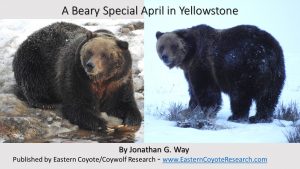
Seeing a grizzly bear is a powerful thing. Since the first humans appeared in North America, people have revered, feared, and admired this magnificent animal. Seeing one can be a life changing experience. I observed at least one grizzly on all 9 days of this trip, which was amazing and is the core story of this e-book.
Yellowstone is normally in transition from winter to spring during most of April, so sightings and temperatures can vary from one trip to another. Despite having officially been spring for a month by that point, it felt more like winter for most of my week and a half there. Because of a long cold season, many ungulates, which are hoofed animals, died. Most notably were the bison. Each carcass produced a large amount of food for the carnivores that found them. Some of these were close to the park road, with a dead bison at Blacktail Ponds being the most visible. Grizzly bear #769, numbered by park management staff, was already at that carcass site for a few days before I arrived and for 8 of my 9 days in the park. You will see hundreds of pictures related to this bruin, in addition to the other abundant wildlife and gorgeous scenery associated with Yellowstone.
For more, including to download it, please visit the book’s link:
Way, J.G. 2024. A Beary Special April in Yellowstone. Eastern Coyote/Coywolf Research, Barnstable, Massachusetts. 596 pages. E-book. Open Access URL: http://www.easterncoyoteresearch.com/BearySpecialAprilinYellowstone.
—–
10. Late Summer in Yellowstone.
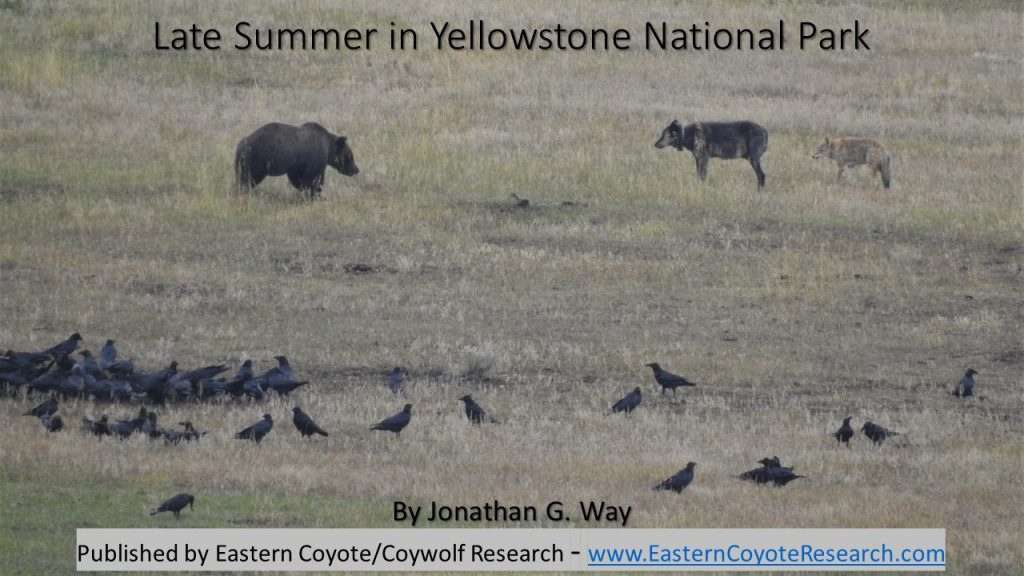
Late summer is generally a challenging time to be in Yellowstone due to the sheer number of people and, often, ongoing road construction projects taking place in various parts of the park. But August, like all other months in the park, is a good time to see wildlife. While our trip started out a little slow on that front, it ended with a bang – specifically, a bison carcass that drew in many wolves and grizzly bears. While many species are preparing for the cold, other large mammals go about their day as they always have. The numerous people in the park are just one more inconvenience in their demanding lives.
This book depicts late summer in the world’s first national park. The scenery is in transition from the greens of summer to the browns of fall. Backcountry hikes are very popular during this time of year with less water on the trails and it’s generally a drier period to enjoy the park’s many beautiful landscapes. Accordingly, we took many treks during our time in the park. We also had great wildlife sightings, particularly at the end of the trip. I stayed so busy for all 9 days of our stay that there are many storylines – as you’ll read about – that played out during my time there.
Citation: Way, J.G. 2024. Late Summer in Yellowstone National Park. Eastern Coyote/Coywolf Research, Barnstable, Massachusetts. 583 pages. E-book. Open Access URL: http://www.easterncoyoteresearch.com/LateSummerInYellowstone.
—–
